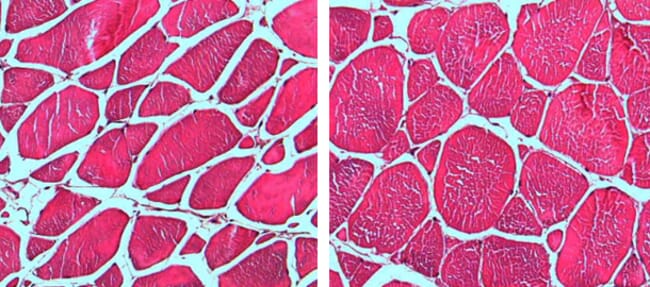One of the early findings is that the increased growth caused by higher water speeds occurs in muscles, rather than the other organs. However, the researchers also argue that it's crucial to keep an eye on any impairments in fish welfare that might be caused by strong currents.

© Photo: Carlo Lazado, Nofima
The aim of the new project was to find the optimum water speeds, or currents, for smolt in recirculation systems.
The researchers divided 80g post-smolt – salmon which have recently adapted to marine life – into groups that would swim for three months in water flowing at four different speeds.
Record speed
They wanted to test to see what happens to salmon physiology at different water speeds and whether or not there are any upper speed limits. Water speed is measured as body length per second.
The speeds that were tested were 0.5 body length/sec (low), 1 (medium), 1.8 (high) and 2.5 (very high).
2.5 body lengths per second is the highest speed that has been tested on salmon smolt to date. In commercial recirculation systems less than one body length per second is normal.
“We tested this very high water speed because we were interested in the physiological response of the fish,” says fish health researcher Gerrit Timmerhaus at Nofima.
He believes that it is not realistic to introduce water speeds that are much higher than the present day standard in existing recirculation systems because this requires special equipment and powerful pumps suitable for achieving such high speeds. He also doubts if it would pay off, even if it did result in increased growth.
Body shape
One of the findings in the trial was that weak currents resulted in a low condition factor – ie a long, narrow body shape – while strong currents resulted in relatively broad fish, which denotes good condition.
Even through producers want a high percentage of muscle and rapid growth, the researchers do not know how this actual type of salmon would manage during the growth phase in the sea, and whether or not a poor condition factor would be compensated for in the salmon by muscle growth at a later stage. One finding in a previous trial conducted at Nofima showed that strong currents result in increased resistance to diseases in the sea.
Scale loss
Salmon swimming in strong currents swim in shoals and the researchers think that this is a sign that they are optimising their use of energy. The skin damage recorded included scale loss and hemorrhagic patches, and not damage that was directly harmful to health in itself.

© Terje Aamodt, Nofima
“Based on this research and previous research conducted at Nofima, I believe that it is optimal for fish to swim at speeds somewhere between 1 and 1.8 body lengths per second. Anything below 1 means that their growth potential is not utilised and they do not build up resistance to disease, and at speeds above 1.8 we risk making compromises with the health of the barrier tissue of the fish,” says Timmerhaus.
This research, which represents a step towards acquiring more knowledge about salmon yields and welfare in closed-containment systems, was conducted at the Norwegian Centre for Research-based Innovation, CtrlAQUA SFI, in Sunndalsøra.



